The last battle of the destroyer "Frunze"
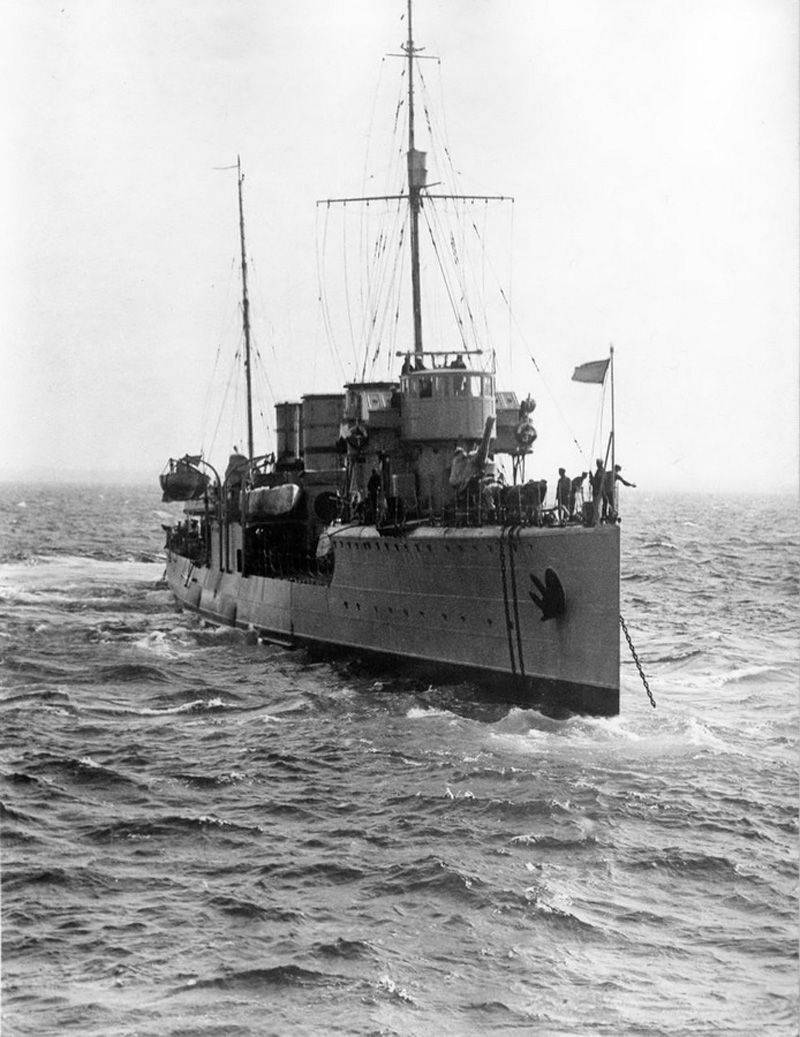
21 September 1941 at noon in the Tendrovskaya Spit area, the Soviet destroyer Frunze provided assistance to the Red Armenia gunboat sinking as a result of an air strike. The old Curtiss Vulcan turbines operated at low speed, the tachometer gauges swayed at the beginning of the scale. "Frunze" lowered the lifeboat to raise the gunboat personnel when one of the signalmen, who were observing the air situation, noticed characteristic silhouettes of aircraft in the sky. Too characteristic. Only one type of aircraft in this part of the Black Sea had non-retractable landing gear with drop-shaped fairings. And their appearance always brought death and destruction. The unshakable calm of the waters of the Black Sea was disturbed by the shrill “alarma” of loud battle bells, the tramp of sailor's shoes, the evil staccato 45-mm anti-aircraft semi-automatic and the growing roaring Jumo engines. The Ju 87 1 77 dive bombers of the 77 'Immediate Support Squadron (I / Schlachtgeschwader XNUMX) began their deadly carousel.
Landing force
September 1941 of the year on the southern sector of the Soviet-German front was tense. However, where then was not intense? Odessa, a large city and the largest port in the south of the USSR, fought for the second month in an environment. 20 August German-Romanian troops, whose task was to capture Odessa, in the amount of eleven infantry, three cavalry divisions and two brigades undertook. They were opposed by three infantry and one cavalry division of the Separate Maritime Army and the militia. At the cost of great effort and dedication of the advancing enemy was able to keep at a distance of 8-15 kilometers from the city. But the forces of the Odessa Defense Region were on the edge. Affected by the huge consumption of ammunition, lack of armored vehicles and heavy weapons. There was a significant loss of personnel killed and wounded. 14 September 1941, the command of the Odessa defensive area asks to provide assistance, primarily reinforcements. On orders from the headquarters, a personnel 157 Infantry Division is being deployed from the city of Novorossiysk. September 17 its first parts land in the port of Odessa. Despite this, the overall situation near Odessa inspired fear. The Soviet command decides to conduct a combined counterattack by the forces of the Maritime Army with the simultaneous landing of airborne and naval tactical assault forces in the area of the village of Grigorievka. Meanwhile, September 21 Romanian units manage to penetrate into the Soviet defense in the Ajalyk estuary and begin a systematic shelling of the city from large-caliber artillery.
General management of the operation was to be carried out by Rear Admiral LA Vladimirsky. Using the old destroyer "Frunze" as a temporary staff ship, Vladimirsky at 6 in the morning went out of Sevastopol on it. At about 14 hours, the destroyer was in the area of the Tendrovsky Spit. Air cover over him was not carried out.
Ship with a biography
Being, in fact, a continuation of the Baltic “Novikov”, the destroyer “Fast” (the new ship received the same name) was built according to the project “destroyer for the Black Sea fleet»Putilovsky plant. He belonged to the “Happy” type. Five ships of this series were built in Nikolaev (shipyard of the Nikolaev Admiralty) and the private shipyard of A. Waddon in Kherson. "Fast" on June 7, 1914 was launched in Kherson, June 1, 1915 came into operation.
At that time, it was a completely modern ship with a full displacement of 1460 tons, equipped with two steam turbines produced in England with a total power of 23 thousand hp. Armament was 3 × 1 102-mm guns, 2 - 47-mm anti-aircraft guns (installed later in 1916 year), 5 × 2 457-mm torpedo tubes. Destroyer could take in the appendage 80 min.
The “Bystry” was actively used by the Russian command in various operations on the Black Sea: escorting large warships, shelling the Turkish coal district of Zunguldak, hunting for communications.
In December 1917, the ship was enrolled in the Red Black Sea Fleet. Since January, 1918, which had been worn out in battles and campaigns, was finally delivered to planned workshops in the workshops of the Sevastopol port, where German troops captured it in May of the same year and, under the number “RO2”, were brought into its fleet. However, inspection by technical experts showed that the destroyer, the turbines of which were dismantled, is not suitable for operation in the near future. Then, when the Germans left at the end of the year, they were replaced by the "enlightened navigators" of the British, who handed over the fixed ship to the Black Sea Fleet of the Armed Forces of Southern Russia from the master's shoulder. However, the whites had neither the strength nor the ability to put the “Quick” into operation, and he continued to defend in Sevastopol. From the ship dismantled the most valuable - artillery. Due to the lack of a move, “Quick” was not used during the evacuation of Wrangel's troops from the Crimea. In November, the 1920 destroyer came under the control of Soviet Russia.
In the conditions of a catastrophic shortage of combat-ready ships, the temporary inability to build new "Quick", it was decided to restore and put into operation. 1923 to 1927 at the Sevmorzavod, and later at the Andre Marti plant in Nikolaev, the destroyer is repaired and restored, which received the name Frunze on February 5 of February. In the course of the work, the ship received new main-caliber artillery with an increased range of fire, and anti-aircraft weapons were also enhanced.
Finally, in December, 1927 of the year “Frunze” became part of the Black Sea Naval Forces - that was the name for the connection of ships that were once called the Black Sea Fleet. Of the interesting details of the pre-war service, one should mention a visit to Istanbul in 1928, and in 1929, in Naples. In 1936-1940, the destroyer underwent a rather lengthy overhaul at Sevmorzavod, where he received new anti-aircraft weapons. Now it was one 76-mm gun, two 45-mm 21-K semi-automatic and two 12,7-mm DShK machine guns. Expansion of the range of air defense weapons was achieved by reducing the number of anchor mines from 80 to 40. The ship's total displacement increased to 1700 tons, and the crew to 172 people.
22 June 1941 of the year "Frunze" met, being a part of the 1-th battalion of destroyers. In July-August, carried out the wiring of transports. In September - involved in the defense of Odessa.
Enemy
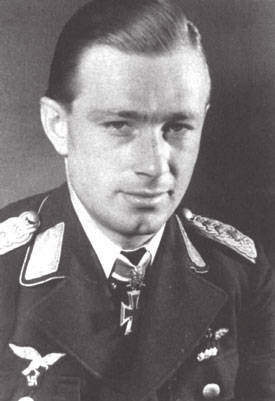 The crew of the no longer a young destroyer had to meet a serious enemy - the pilots of the 77th squadron of direct support to the troops, or, closer to Russian terminology, the assault squadron. This compound was formed on May 1, 1939. Its arsenal received the latest then dive bombers Ju-87. Squadron pilots actively participated in Polish and French companies. In the Battle of England, the 77th suffered heavy crew losses. It was later transferred to the Mediterranean Theater, where it contributed to operations against Greece and Yugoslavia. It was the planes of this squadron that caused maximum destruction in Belgrade. With the beginning of Operation Barbarossa, St77 was located in the central section of the German offensive, supporting units of the 2nd tank Guderian group acting on the encirclement of the Soviet Western Front. In mid-summer, the connection was transferred to the southern section of the Soviet-German front, where it operated from airfields in Iasi and Balti. The Commander of the 77th Squadron for that period was Major Earl Clemens von Schörnborn-Wiesentheide, Knight of the Knight's Cross.
The crew of the no longer a young destroyer had to meet a serious enemy - the pilots of the 77th squadron of direct support to the troops, or, closer to Russian terminology, the assault squadron. This compound was formed on May 1, 1939. Its arsenal received the latest then dive bombers Ju-87. Squadron pilots actively participated in Polish and French companies. In the Battle of England, the 77th suffered heavy crew losses. It was later transferred to the Mediterranean Theater, where it contributed to operations against Greece and Yugoslavia. It was the planes of this squadron that caused maximum destruction in Belgrade. With the beginning of Operation Barbarossa, St77 was located in the central section of the German offensive, supporting units of the 2nd tank Guderian group acting on the encirclement of the Soviet Western Front. In mid-summer, the connection was transferred to the southern section of the Soviet-German front, where it operated from airfields in Iasi and Balti. The Commander of the 77th Squadron for that period was Major Earl Clemens von Schörnborn-Wiesentheide, Knight of the Knight's Cross.Directly in the attack on the Frunze, the Ju-87 I group of the 77 squadron (an approximate analogue of the Soviet air regiment) under the command of the Hauptmann Helmut Brooke took part. More recently, for the hundredth combat sortie 4 September 1941, Brooke received the Knight's Cross. The crews of the squadron, as already mentioned, had a great military experience. According to general statistics, the 77-I assault squadron is one of the five leaders in awarding Knight Crosses among the Luftwaffe connections.
The last battle of the destroyer "Frunze"
To ensure the landing in Grigorievka, the operational connection of the ships was formed as part of the cruisers “Red Caucasus” and “Red Crimea”, the destroyers “Impeccable”, “Merciless” and “Boky” (the last three are all new - ships of the 7 project) and the gunboat “Red Georgia "(the latter belonged to the pre-revolutionary type" Elpidifor "). On board the ships was the 3 th Black Sea Regiment of the Marine Corps with reinforced armaments - 2 thousand people. The commander of the command was directly Rear Admiral S.G. Gorshkov (flag on the "Red Caucasus").
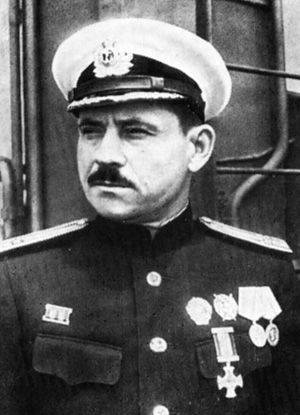 At 6 a.m., Frunze left Sevastopol, on board were Rear Admiral Vladimirsky, who was supposed to lead the landing, and deputy chief of staff of the Odessa Defense Region, captain 1st rank S.I. Ivanov. “Frunze” was led by the captain of the 3rd rank V.N. Eroshenko instead of the wounded captain-lieutenant P.A. Bobrovnikova. At about 14 pm, while in the area of Tendrovskaya Spit, from the side of the ship they noticed a disaster gunboat “Red Armenia”, which was shortly before attacked by Ju-87, causing severe damage to it. The signalmen reported to the bridge: “We see the sunken gunboat“ Red Armenia ”, smoke, nobody on the ship.” The destroyer is sent to assist. When approaching the disaster site, people floating on the water are noticed. Boats descend from the destroyer. One of them picked up and brought on board the commissioner of the boat, Serov. From the information received it turned out that the boat was attacked aviation the enemy half an hour ago. Rear tug OP-8, Rear Admiral Vladimirsky, ordered to go to the boat and put out the fire.
At 6 a.m., Frunze left Sevastopol, on board were Rear Admiral Vladimirsky, who was supposed to lead the landing, and deputy chief of staff of the Odessa Defense Region, captain 1st rank S.I. Ivanov. “Frunze” was led by the captain of the 3rd rank V.N. Eroshenko instead of the wounded captain-lieutenant P.A. Bobrovnikova. At about 14 pm, while in the area of Tendrovskaya Spit, from the side of the ship they noticed a disaster gunboat “Red Armenia”, which was shortly before attacked by Ju-87, causing severe damage to it. The signalmen reported to the bridge: “We see the sunken gunboat“ Red Armenia ”, smoke, nobody on the ship.” The destroyer is sent to assist. When approaching the disaster site, people floating on the water are noticed. Boats descend from the destroyer. One of them picked up and brought on board the commissioner of the boat, Serov. From the information received it turned out that the boat was attacked aviation the enemy half an hour ago. Rear tug OP-8, Rear Admiral Vladimirsky, ordered to go to the boat and put out the fire.Soon nine dive bomber Ju 87 I group 77-th squadron appear in the sky. Obviously, the Germans were heading towards “Armenia” in order to finish it, however, having found the destroyer, they changed course and attacked it. Eroshenko, leaving the boats in the disaster area, orders to increase the speed to 23 nodes in order to move more seaward to allow maneuver. Having rebuilt into a chain, German planes start bombing. All the ship’s air defenses come into battle - even the old 76-mm Lender gun fires with shrapnel. The space above the ship is filled with tracer and flakes of ruptures. Initially, the evasion maneuver is triggered — the first three aircraft miss the mark — high columns of water rise from close bomb explosions.
The crew of the 4-th "Stuka" was more accurate - 250 kg bomb gets into the stern of "Frunze" in the area of the main caliber gun №4. The explosion jammed the steering wheel, and the ship began to describe the circulation to the right. The right machine failed, the machine telegraph ceased to operate. The 76 anti-aircraft Lender gun was dropped overboard. Following this, in the forecastle area, next to the board, another bomb exploded. A part of the navigating bridge was destroyed, the deck was showered with splinters. Killed captain 1 rank S.I. Ivanov, the commissar of the ship Zolkin, the commander of the ship Eroshenko received a heavy wound in the arm and stomach. Vladimirsky and foreman Nosov were slightly injured.
Water begins to flow into the bow and stern areas, there is a slow increase in trim on the stern with a simultaneous roll to the left side. The destroyer was in a difficult situation, but the German dive bombers ran out of bombs, and they went to their own airfield. Began the struggle for vitality. The damaged transverse bulkhead in the 4 th cockpit area was reinforced, and the spread of water was halted. After another half an hour, it was possible to put into operation the right-hand car and partially the steering. Taking the command of the ship Vladimirsky, assessing the situation, decides to stick the ship to the shallows. The machines were controlled by voice commands - orders were transmitted along the chain. "Frunze" slowly crawled to the shore, the flow of fresh water began again. Understanding that there is simply nothing to leave the ship - the boats were either already lowered or riddled with splinters - Vladimirsky gave orders to bring all the beds onto the deck, unscrew the cork mattresses.
Approximately in 15 hours the nine Ju-87 reappeared over the ship - the Germans did not want to miss their prey and came to finish the goal. By the time the attack began, the Frunze position was critical - he had lost the ability to maneuver and develop full speed. The 45-mm 21-K semi-automatic ammunition is almost out. The Lender cannon were disabled. The intensity of anti-aircraft fire sharply decreased, which allowed the crews of German dive bombers to reduce the attack height from 800 to 100 meters. After the bomb hit the forecastle, which caused the fire, Vladimirsky ordered the 1 artillery raft to be flooded to avoid detonation. Water intensively goes deep into the hull, the buoyancy margin decreases. Roll reaches 45 degrees. Considering the position of the ship hopeless, the rear admiral gives the order to leave all the internal posts and go on deck. The wounded were transferred to rostra. In 15, the Frunze minute 07 clock touches the bow of the cheekbone in the 90 cable from the Tendrovsky lighthouse. The ship has ceased to roll, resting on the ground. Part of the settings was under water. Here and pith mattresses were useful for personnel. The wounded remained mostly on rostrats, Vladimirsky was also there. German bombers, having spent a supply of bombs, again flew away. The tugboat OP-8 approached the half-submerged destroyer, to which the enthusiastic Junkreas did not pay any attention.
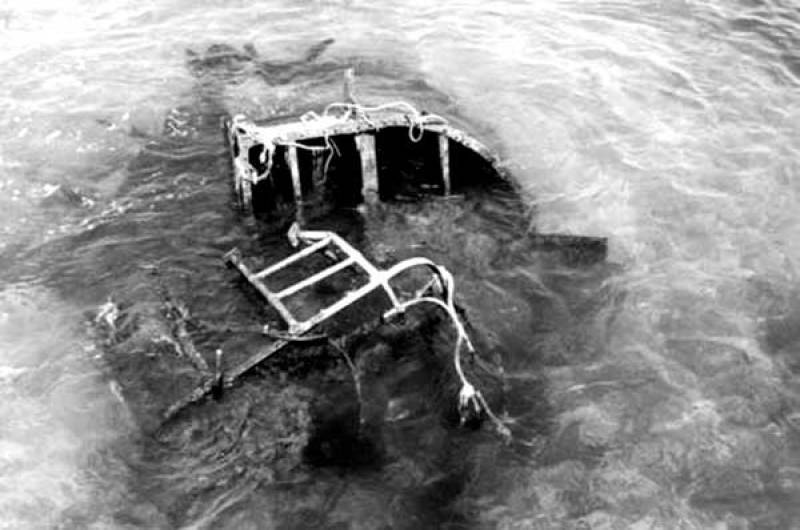
The tug began to take people - he picked up all those who were on board and in the water. The last "Frunze" left Vladimirsky and Eroshenko, who refused to evacuate with the wounded, who were transported first.
The tug was ordered to move as close to the shore as possible. However, the 1 group of the 77 squadron showed truly Teutonic methodical stubbornness on this day, and in the 16 hours in the sky over the Tendrovsky spit, the Junkers engines again began to howl.
The overcrowded tug could not effectively maneuver, and from the very first entry it was hit by a bomb that hit the engine room. The resulting damage turned out to be fatal for a small ship - the OP-8 went on board. The depth was small, part of the tug hull remained above the water. Everyone who was on it, swam to the shore. On the half-submerged "OP-8" there were a few seriously injured, including Eroshenko. Vladimirsky was also there. The crews of the Ju-87, who had tasted, got rid of the bomb load and dropped - they earned wing machine guns. Germans excitedly shot people wallowing in the water. Those who remained in tow had to hide behind the bulwarks in order to go unnoticed. In total, only 238 escaped from the 78 people who were aboard the Frunze that day. About 50 people died from bombings, the rest were shot by the Germans in the water when they tried to swim to the shore.
About half an hour later, torpedo boats approached, which delivered all the survivors to Tendra. As a result of the death of the Frunze, the departure of ships with a landing force from Sevastopol was delayed, the command of the operation was transferred to Rear Admiral S.G. Gorshkovu, and L.A. Vladimirsky was brought aboard the cruiser "Red Caucasus" already during the operation on the torpedo boat. The Soviet squadron, albeit late, arrived at the scene of the operation. The ship artillery of two Soviet cruisers and three destroyers provided significant support to the marines. The landing at Grigorievka was a complete success and entered into history as one of the most successful amphibious operations of the Soviet fleet.
After the war
In June, the Frunze 1949 was surveyed by divers. The ship lay with a slight roll on the port side at a depth of 8-9 meters. One 102-mm cannon and deck mechanisms were missing. The hull of the ship had great destruction. The care of the Soviet fleet in those years was enough, and the old destroyer lying on the Tendrovsky Spit was given up, and he didn’t particularly hinder navigation.
Interest in the sunken ship returned already at the end of 60 - the beginning of 70-s, when members of the Sadko diving club of Nikolaev dived down to the Frunze-encased building. The history of the club itself requires a separate article - in the Soviet Union it was known far beyond the confines of Nikolaev. A group of young, enthusiastic people - students, athletes and those who are not just indifferent - decided to organize a club to examine and research underwater objects. One of the first dives were made on the “Shock” monitor detected by the “Sadkowians” and the destroyer “Frunze”.
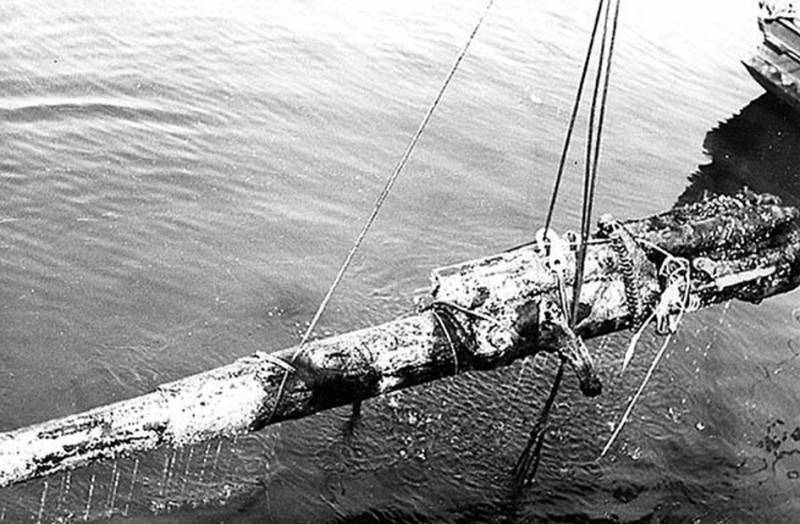
For the state at that time it was not particularly difficult to assist such groups of researchers. Club "Sadko" allocated expeditionary vessel, the necessary equipment for underwater work. In 70, the club members carried out the raising of two main-caliber guns and the ship's anchor. Several safes with documents, one of which belonged to the commissioner of the ship, were found and retrieved to the surface. On the Frunze, by the way, all the staff documentation for the upcoming landing operation remained.
Many discovered and personal belongings of sailors. A number of items raised from the destroyer are on display at the Nikolaev Shipbuilding and Fleet Museum. Part of the documents transferred to the Central Naval Archive.
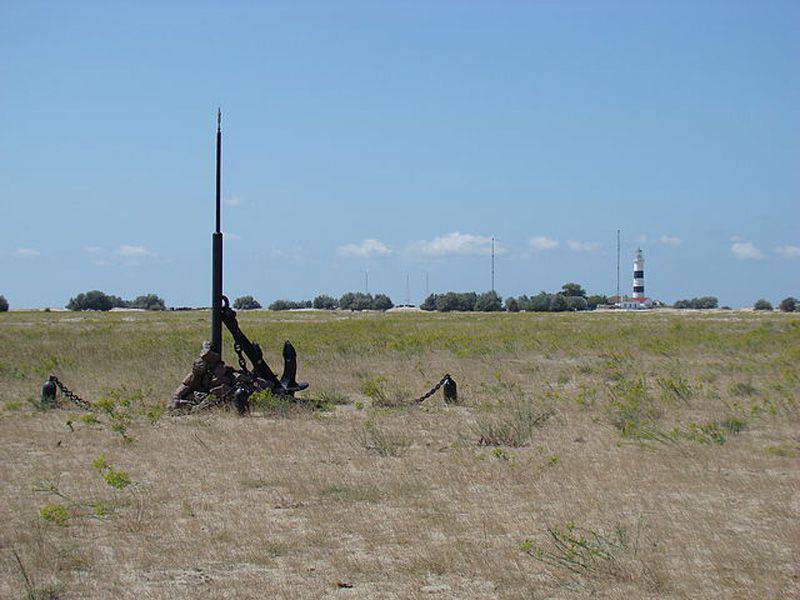
Already in the years of "independence" the Frunze Corps was used for diving. Club "Sadko", clamped by market conditions, courageously fights with the circumstances, having in the asset only enthusiasm and dedication to the beloved work. The memorial erected by the members of the Sadko Club on the Tendrovsky Spit, and the guns of the main caliber on the external site of the Nikolaev Shipbuilding and Fleet Museum remind of the dead in an unequal battle "Frunze".
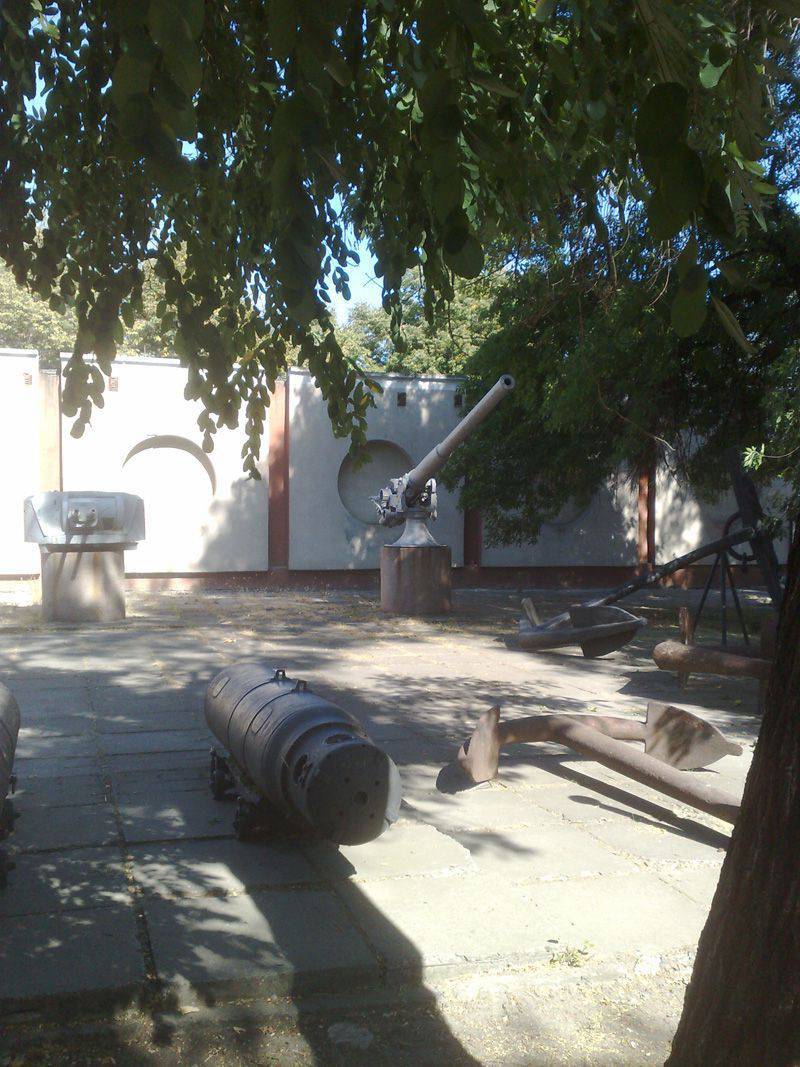
Information